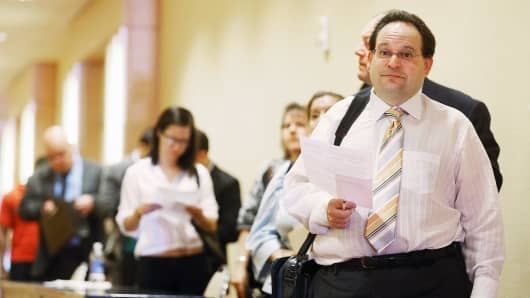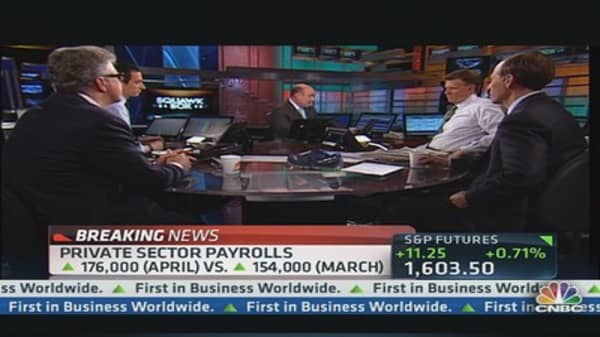Job creation accelerated in April, with the U.S. economy adding 165,000 new positions and the unemployment rate edging lower, quelling worries of a spring slowdown.
New figures from the Bureau of Labor Statistics indicated that a light March payrolls report may have been an aberration, as higher taxes and reduced spending due to the fiscal stalemate in Washington failed to deter growth.
The unemployment rate edged lower to 7.5 percent, due partly to the jobs gains and to a labor-force participation rate that remains at a 35-year low. An alternative rate that also counts those who have quit looking or are underemployed rose to 13.9 percent.
Job gains were concentrated primarily in the professional and business services sectors, with 73,000, and bars and restaurants, which added 38,000. Retail also added 29,000 jobs.
"It's not great, not disastrous, just kind of an in-the-middle number," said Bob Damon, president of executive recruiting firm Korn/Ferry International.
He noted that the hiring is coming from small-and mid-cap companies that are outpacing larger firms, which are "still in stall mode."
"What's really fueling it is the small- and mid-cap world where innovation is really at the forefront," Damon said. "What we're looking for is the Fortune 500 (companies) to rebound. Once we see that going on, then we'll start to see real job creation in the country."





